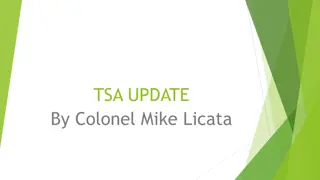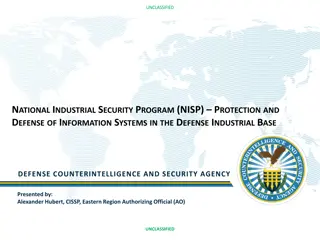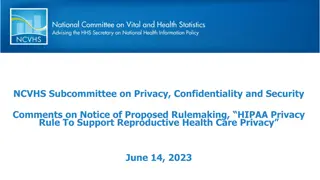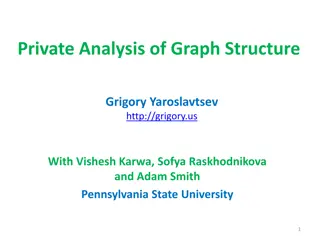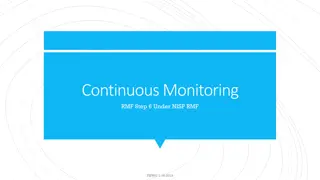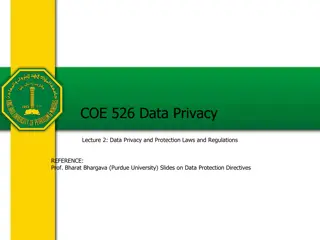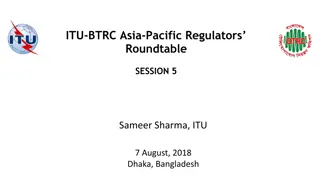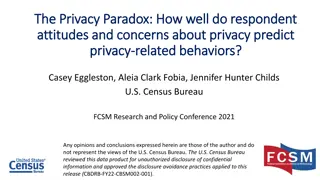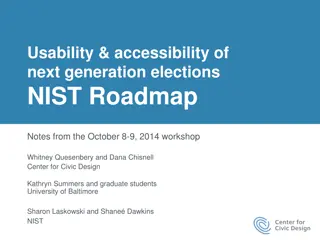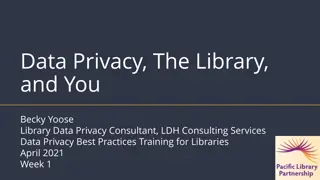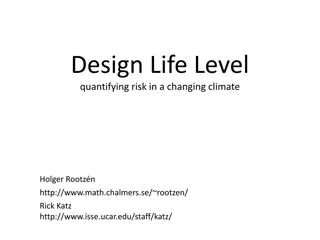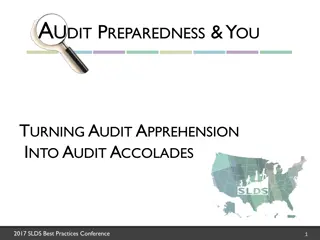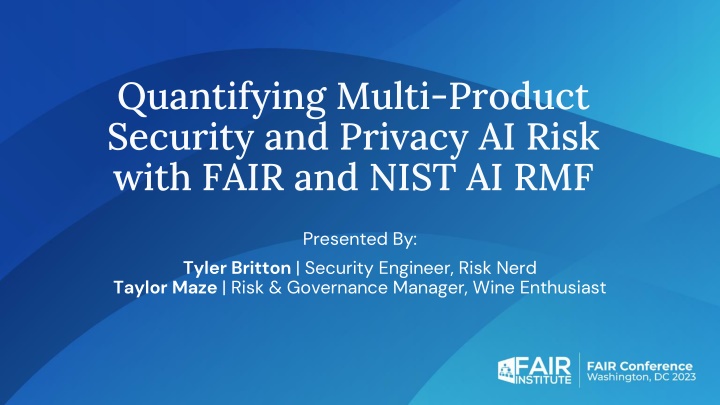
AI Risk Quantification Process with FAIR and NIST AI RMF
Explore the methodology of quantifying AI-related risks using FAIR and NIST AI RMF frameworks. Learn how to assess, manage, and mitigate risks associated with multi-product security and privacy in the AI landscape.
Download Presentation

Please find below an Image/Link to download the presentation.
The content on the website is provided AS IS for your information and personal use only. It may not be sold, licensed, or shared on other websites without obtaining consent from the author. If you encounter any issues during the download, it is possible that the publisher has removed the file from their server.
You are allowed to download the files provided on this website for personal or commercial use, subject to the condition that they are used lawfully. All files are the property of their respective owners.
The content on the website is provided AS IS for your information and personal use only. It may not be sold, licensed, or shared on other websites without obtaining consent from the author.
E N D
Presentation Transcript
Quantifying Multi-Product Security and Privacy AI Risk with FAIR and NIST AI RMF Presented By: Tyler Britton | Security Engineer, Risk Nerd Taylor Maze | Risk & Governance Manager, Wine Enthusiast
Agenda As s es s ment Scope & Backgr ound Assessment P r ocess Methodology NIST AI RMF FAIR Key Takeaways Practical Application: AI Risk Quantification Guide
Assessment Scope: the Ask How does the usage and development of AI products impact our overall risk posture? and how can we best manage that new risk?
The Challenge How do we quantify AI-related risks? Key lack of industry information and regulatory guidance about AI risks, as the emergence of AI is new.
Assessment Process AI risk assessment process remains largely unchanged: - Initial scope ideation (using NIST AI RMF) - Review & refine scope into risk scenarios with SMEs - Data gathering / quantification - Reporting
NIST AI Risk Management Framework Goal: encompass risk related to AI trustworthiness to think outside the [cyber and privacy] risk box to Source: Characteristics of trustworthy AI Systems, NIST AI RMF (https://nvlpubs.nist.gov/nistpubs/ai/NIST.AI.100-1.pdf)
AI Risk Recon Topics AI Risk topics gathered from a variety of sources, including SMEs and online Membership Inference Hallucinations Model Inversion Biased Data/Outputs Model Theft Model Poisoning Harmful/Unlawful Outputs Prompt Injection Model Deterioration
Step 2: Sanity Check & FAIRitization
FAIR-itization example: Hallucination Concern to risk scenario translation process 1.Define the loss (i.e. risk scenario statement) 2.Identify the attack chain 3.Identify the point at which the loss event and secondary loss event happens 4.Identify the loss impacts
FAIR-itization example: Hallucination Concern Identification / Risk Therapy 1.What is a hallucination? 2.How do hallucinations happen? 3.Why do we care if it happens? 4.What s the impact?
FAIR-itization example: Hallucination Loss Event Defined: Quantifiable Risk Statement The quality foundational producing outputs. risk associated of the with an impact result to of the the and product model as hallucinating misleading, a inaccurate, or false
Multi-Product Application How we assessed 60+ scenarios in <2 weeks - Map scope products - Remove those that do not apply (this will become obvious during data gathering) each identified risk scenario to the in-
AI Risk Recon Topics 1.Product A immature model causes hallucination 2.Product A bad data leads to hallucination 3.Product B bad data leads to hallucination Hallucinations 1.Product A model theft by insider 2.Product A model theft by external actor 3.Product B model theft by insider Model Theft 1.Attacker performs P.I. on Product A 2.Attacker performs P.I. on Product B Prompt Injection
Step 3: Data gathering & quantification
AI Data Gathering: Hallucinations Loss Frequency Loss Chain How many AI-generated outputs does the product produce, per year? [Contact Frequency] Users use the product Output is a hallucination What is the hallucination rate of the product, i.e., what percentage of outputs may result in a hallucination? [Probability of Action] User notices hallucination What portion of hallucinations will users (1) be aware of and (2) adversely impacted by? [Susceptibility] User is adversely impacted by the hallucination
AI Data Gathering: Hallucinations Loss Frequency Loss Chain How many AI-generated outputs does the product produce, per year? [Contact Frequency] Users use the product 1M Output is a hallucination 2% What is the hallucination rate of the product, i.e., what percentage of outputs may result in a hallucination? [Probability of Action] User notices hallucination 50% What portion of hallucinations will users (1) be aware of and (2) adversely impacted by? [Susceptibility] User is adversely impacted by the hallucination 1% 100 Loss Events per Year
AI Data Gathering: Hallucinations Frequency - What factors impact the likelihood of customer adverse reactions? - Customer awareness - how likely are they to notice? - Customer impact - how harmful is the hallucination? - Customer sensitivity - how much is too much? Estimation Considerations - What service is the product providing? - What does a hallucination look like for the given product? - Does the output inform a material outcome?
AI Data Gathering: Hallucinations Frequency - What factors impact the hallucination rate? - Temperature (model creativity) - Other Controls: - Few shot - Chain of reasoning - Delimiting - Constraints on model response Estimation Considerations - What is the control s intended efficacy? - What is the degree of variance from the intended efficacy?
AI Data Gathering: Hallucinations Magnitude Costs to consider: - Incident response effort - customer complaints, investigation - Legal impact - Torts, Privacy laws, litigation - Customer churn Estimation Considerations - Level of effort to respond to customer complaint - Limitations of liability, required effort to pursue damages - Normal customer churn, degree of harm
Example Reporting: NIST AI RMF Mapping
Example Reporting: Scenario Themes
Key Takeaways The use of AI is not i nher ent l y high- risk There s nothing special about AI- risk, it s just a new attack surface How you develop/deploy AI, and what you use it for determines it s risk Different types of AI risks will be wildly different in different companies Considerations - How are we building AI products? - How are we deploying AI products? - How are we using AI 3rd Party Services?
Thank you! Inquire for Quant Risk AI Assessment Framework Questions? Taylor Maze Taylor Maze | tmaze@dropbox.com Tyler Britton Tyler Britton | tbritton@dropbox.com

